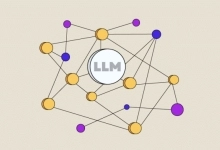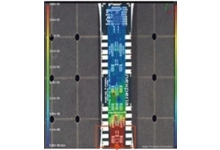This section features posts from around the Web by authors with passion,
integrity, authority, and community support in the IP / SoC industry.

|
Integrating Coherent RISC-V SoCs: Advanced Solutions with Perspec
Cadence Blog
-
Anika Sunda, Cadence
Apr. 23, 2024
|
|
|
|

|
Semi Market Decreased by 8% in 2023... When Design IP Sales Grew by 6%!
SemiWiki
-
Eric Esteve, IPnest
Apr. 19, 2024
|
|
|
|

|
Defacto SoC Compiler performance on AWS Graviton3
arm Blogs
-
Tim Thornton, Arm
Apr. 18, 2024
|
|
|
|

|
Challenges in Designing Automotive Radar Systems
Ceva's Experts blog
-
By Tomer Yablonka, Ceva
Apr. 18, 2024
|
|
|
|

|
Cooking Up Better Performance for Arm-Based SoCs
Cadence Blog
-
Vinod Khera, Cadence
Apr. 17, 2024
|
|
|
|

|
A Striped Bus Architecture for Minimizing Multi-Core Interference
Frontgrade Gaisler Blog
-
Fabio Malatesta
Apr. 15, 2024
|
|
|
|

|
RISC-V: Democratizing Innovation in CPU Design
Cadence Blog
-
Anika Sunda, Cadence
Apr. 15, 2024
|
|
|
|

|
Achronix Achieves 5X Faster Physical Verification for Full SoC Within Budget with Synopsys Cloud
Synopsys Blog
-
Anuj Pant, Synopsys
Apr. 12, 2024
|
|
|
|

|
Verifying CXL 3.1 Designs with Synopsys Verification IP
Synopsys Blog
-
Nikhil Jain, Zongyao Wen (Synopsys)
Apr. 12, 2024
|
|
|
|

|
The Future of PCIe Is Optical: Synopsys and OpenLight Present First PCIe 7.0 Data-Rate-Over-Optics Demo
Synopsys Blog
-
Keivan Javadi Khasraghi, Priyank Shukla (Synopsys)
Apr. 10, 2024
|
|
|
|

|
Arm Ethos-U85: Addressing the High Performance Demands of IoT in the Age of AI
arm Blogs
-
Parag Beeraka, Senior Director, Segment Marketing, IoT, Arm
Apr. 09, 2024
|
|
|
|

|
Arm Corstone-320: Accelerating Voice, Audio and Vision IoT Systems
Diya Soubra, Director, IoT Reference Design Platforms, Arm
Apr. 09, 2024
|
|
|
|

|
Mentium Accelerates Tape-out of AI Accelerator Chip for Space Applications on Synopsys Cloud
Synopsys Blog
-
Anuj Pant, Synopsys
Apr. 08, 2024
|
|
|
|

|
Can AI-Driven Chip Design Meet the Challenges of Tomorrow?
Synopsys Blog
-
Synopsys Editorial Team
Apr. 08, 2024
|
|
|
|

|
LPDDR5X Opening New Markets for Low-Power DRAMs
Cadence Blog
-
Shyam Sharma, Cadence
Apr. 08, 2024
|
|
|
|

|
RISC-V Technical Leadership Update
RISC-V Blog
-
Calista Redmond, RISC-V
Apr. 08, 2024
|
|
|
|

|
Custom Compute for Edge AI: Accelerating innovation with Lund University and Codasip University Program
Codasip Blog
-
Tadej Murovic, Codasip
Apr. 04, 2024
|
|
|
|

|
Reducing Errors and Iterations with an Enhanced Timing Constraints Signoff Flow
Synopsys Blog
-
By Naveen Battu, Rimpy Chugh (Synopsys)
Apr. 02, 2024
|
|
|
|

|
TetraMem Delivers RISC-V AI Accelerator Tape-Out in Record Time on Synopsys Cloud
Synopsys Blog
-
Anuj Pant, Synopsys
Apr. 02, 2024
|
|
|
|

|
Why You Need to Consider Energy Efficiency of Your HPC SoC Early On
Synopsys Blog
-
William Ruby, Synopsys
Apr. 02, 2024
|
|
|
|

|
Functional safety in the automotive supply chain
Codasip Blog
-
Dave Higham and Maricel Ventura, Codasip
Mar. 29, 2024
|
|
|
|

|
Intel and Cadence Partner to Build Out the Foundry Ecosystem in America
Cadence Blog
-
Gautam Singampalli, Cadence
Mar. 29, 2024
|
|
|
|

|
Ensuring Integrity: The Role of SoC Security in Today's Digital World
With Imagination Blog
-
Rob Fisher, Imagination Technologies
Mar. 28, 2024
|
|
|
|

|
Futureproofing Automotive AI to Manage Lifetime Cost
Ceva's Experts blog
-
Dan Nesher, Ceva
Mar. 27, 2024
|
|
|
|

|
Can GPUs Accelerate Digital Design Implementation?
Synopsys Blog
-
James Chuang, Synopsys
Mar. 27, 2024
|
|
|
|

|
New ML Networks Far Outperform Old Standbys
Quadric Blog
-
Quadric
Mar. 25, 2024
|
|
|
|



















